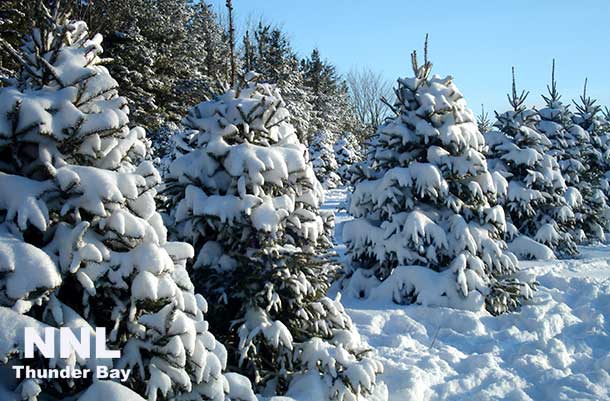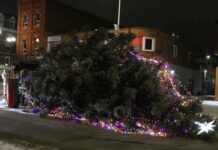There’s comfort in tradition. Twinkling lights on a bushy Christmas tree, the scent of the boughs filling the room, brings calm to the stress of living through a pandemic. This year, more than ever, only a real Christmas tree will make the season sparkle.
A real Christmas tree in your living room, grown in Canada, represents employment for thousands of people from the farm, to the transportation, to your neighbourhood market. Over one million trees are sold in Canada every year.
MNRF also allows you to harvest one Christmas tree off of Crown Land if it is for personal use. That is for Western and Northern Ontario. If you are in the Toronto/GTA region you have to travel about four hours north to be able to harvest your own tree.
After those trees are harvested, new seedlings are planted for future holiday seasons. These tree farms also provide continuous habitat for wildlife and retain soil and water, helping to prevent water runoff and flooding. Each acre of Christmas trees produces enough oxygen for 18 people a day and acts as a carbon dioxide sink, reducing CO2 emissions.
Choosing a real Christmas tree is a commitment to sustainability.
By contrast, artificial Christmas trees are not kind to the earth. They generate pollution and waste – the ecological impact of plastics is posing a global challenge. Manufactured mainly in China, artificial trees require large amounts of fossil fuels in production and transportation to points of sale across the world.
Artificial trees are made of pvc plastic and lead (to stabilize the pvc). The lead breaks down and will form toxic lead dust after a few years. Lastly, most artificial trees end up in landfills, where they will remain for centuries.
Real Christmas trees are 100% biodegradable. They are mulched – some would say tree-cycled – for use in parks and gardens, and laid in streams to prevent erosion of the banks. In the water, they provide habitat for fish and wildlife. Large branches can be used for woodworking, small fences and raised garden beds. A real Christmas tree gives back to the planet.
Choosing The Perfect Tree
Whether you are taking your family to a Christmas tree farm or browsing your local pop-up market, there are a few basics to look for.
Rob Keen, Forests Ontario CEO, points out: “A pre-cut tree shouldn’t have any bare branches and a lot of needles should not fall from a gentle shake of the tree. It should have good colour (no rusty needles) and if you can see the base of the trunk, ideally there should be sap coming out to indicate freshness.”
When choosing your tree in a field, look for a straight trunk and few gaps in the branches. Everyone has a favourite evergreen, but you might like to know that Spruce trees will lose their needles slightly faster than Pine or Fir trees.
After you’ve found the perfect tree, cut a small cookie off the bottom to allow daily watering to be easily taken up by the tree. Then turn up the volume on your favourite Christmas tunes, and sink into the couch. There’s nothing better than the glow of shimmering lights on a real Christmas tree






